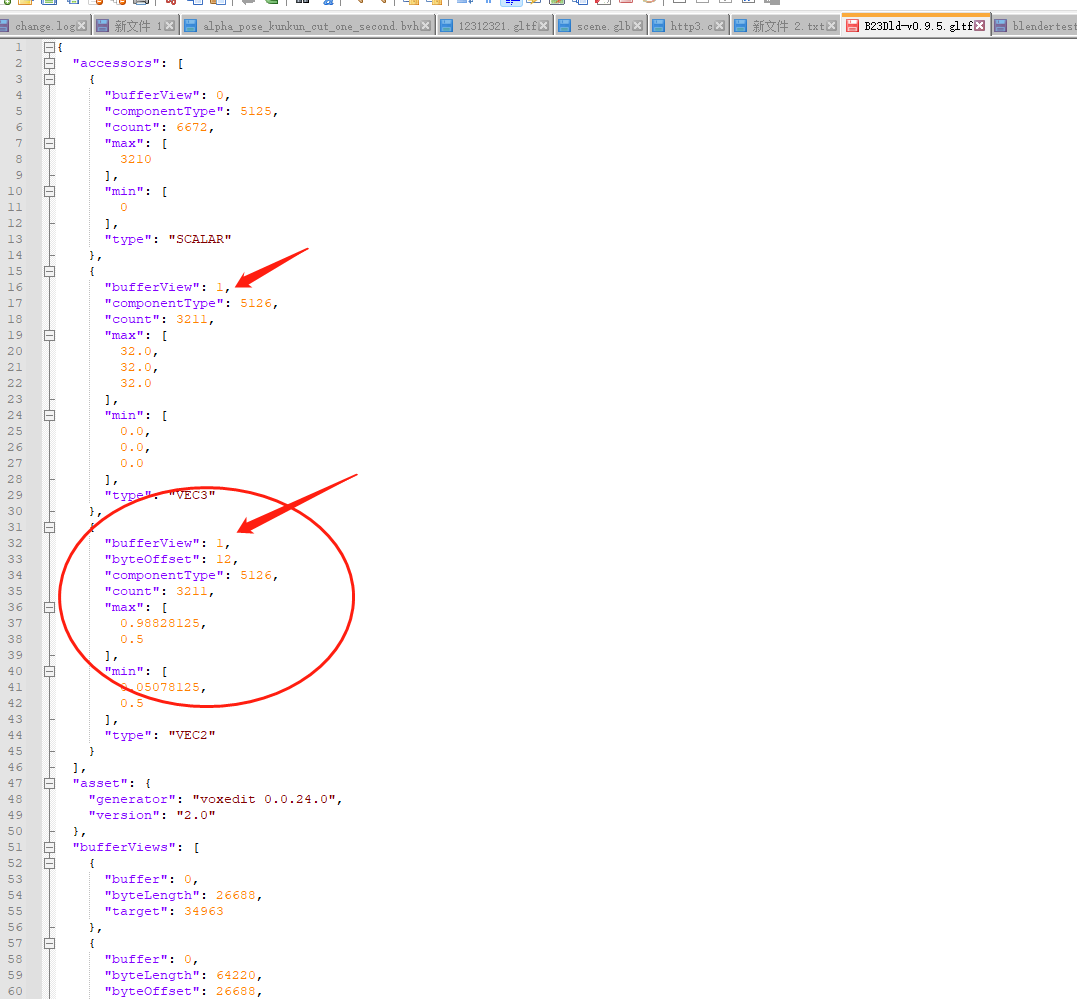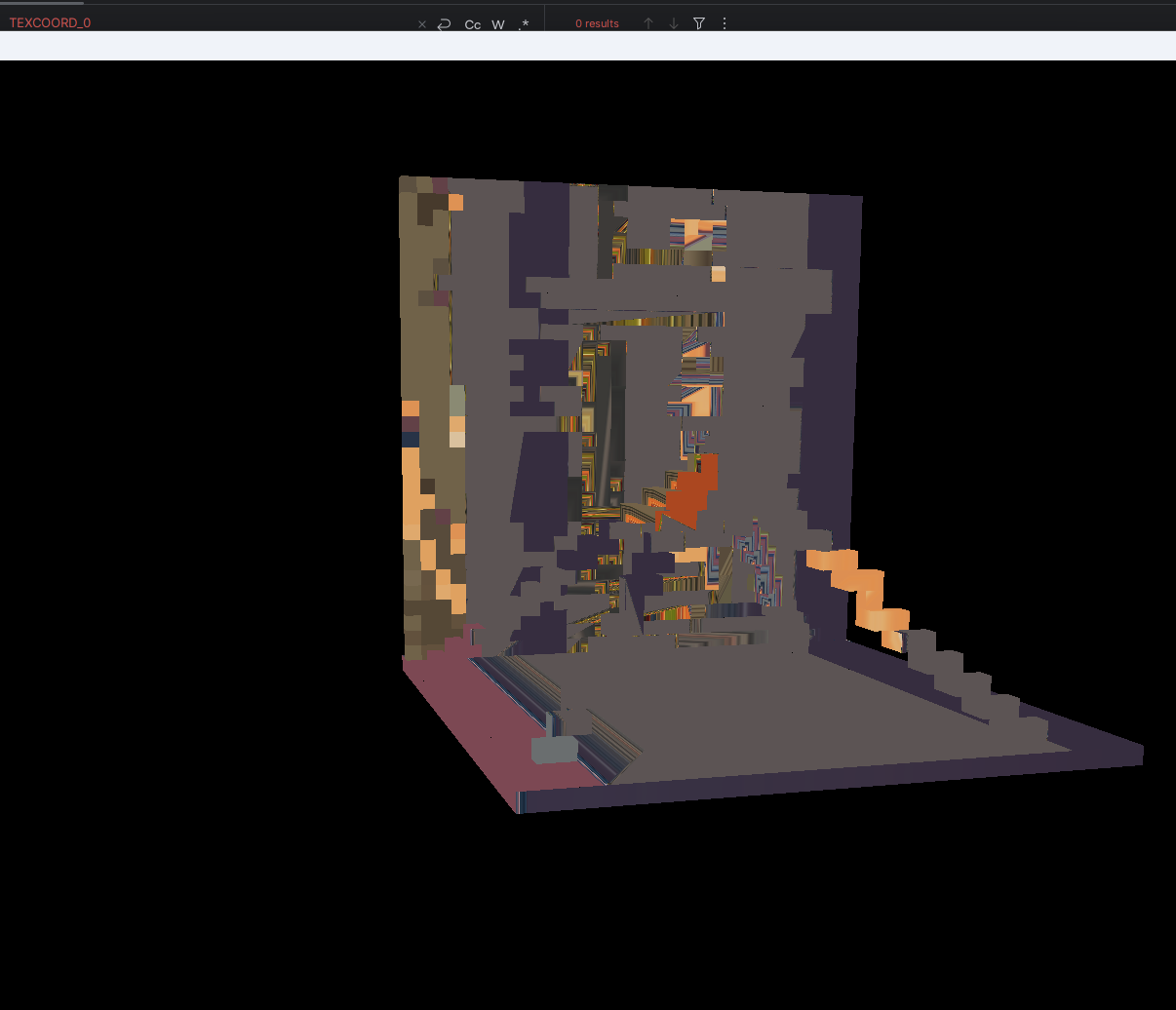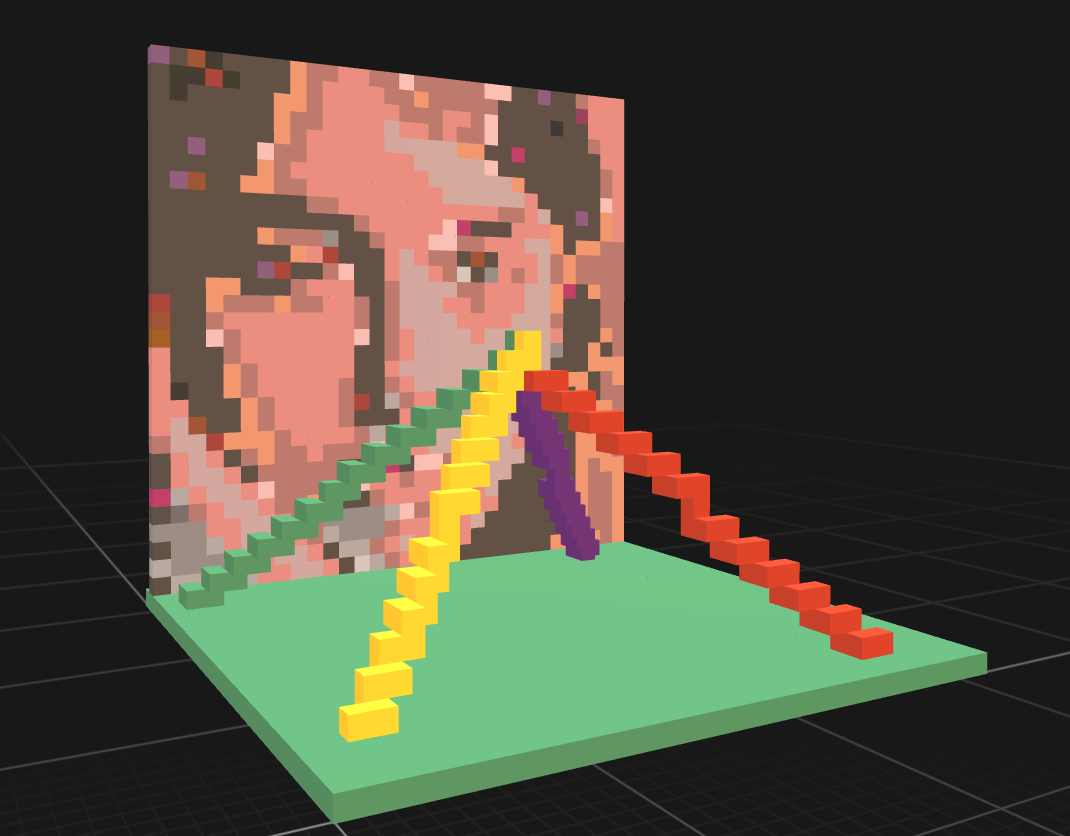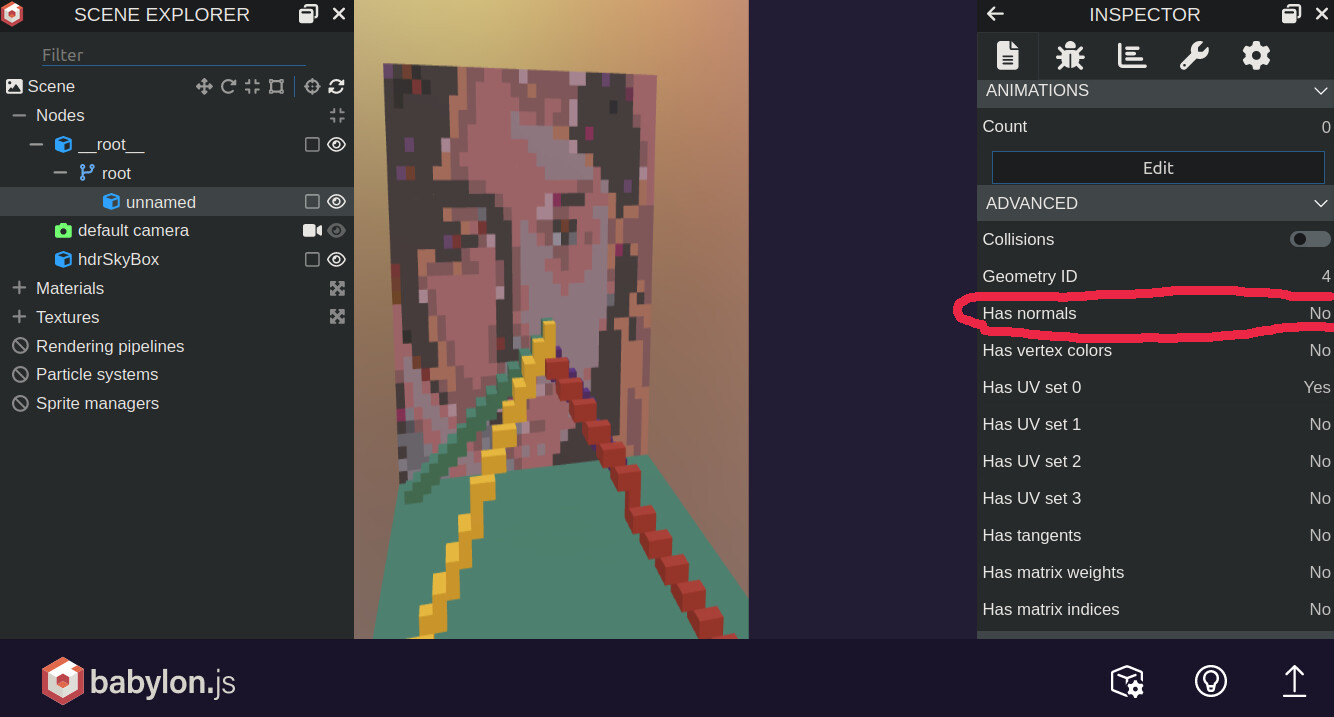This is not required
Oops, I actually mean gltf embeded used by OP.
https://imgur.com/oQWFgMN.png
And just in case,
Here is the original gltf (not working in JME)
{
"accessors": [
{
"bufferView": 0,
"componentType": 5125,
"count": 6672,
"max": [
3210
],
"min": [
0
],
"type": "SCALAR"
},
{
"bufferView": 1,
"componentType": 5126,
"count": 3211,
"max": [
32.0,
32.0,
32.0
],
"min": [
0.0,
0.0,
0.0
],
"type": "VEC3"
},
{
"bufferView": 1,
"byteOffset": 12,
"componentType": 5126,
"count": 3211,
"max": [
0.98828125,
0.5
],
"min": [
0.05078125,
0.5
],
"type": "VEC2"
}
],
"asset": {
"generator": "voxedit 0.0.24.0",
"version": "2.0"
},
"bufferViews": [
{
"buffer": 0,
"byteLength": 26688,
"target": 34963
},
{
"buffer": 0,
"byteLength": 64220,
"byteOffset": 26688,
"byteStride": 20,
"target": 34962
}
],
"buffers": [
{
"byteLength": 90908,
"uri": "data:application/octet-stream;base64,SAsAANgKAABHCwAASAsAAEcLAABJCwAA1woAAIEKAADa...=="
}
],
"images": [
{
"uri": "data:image/png;base64,iVBORw0KGgoAAAANSUhEUgAAAQAAAAABCAYAAAAxWXB3AAAEDElEQVR4XgEB...=="
}
],
"materials": [
{
"name": "12212233864816749743",
"pbrMetallicRoughness": {
"baseColorTexture": {
"index": 0
},
"metallicFactor": 0.0
}
}
],
"meshes": [
{
"name": "unnamed",
"primitives": [
{
"attributes": {
"POSITION": 1,
"TEXCOORD_0": 2
},
"indices": 0,
"material": 0,
"mode": 4
}
]
}
],
"nodes": [
{
"children": [
1
],
"matrix": [
1.0,
0.0,
0.0,
0.0,
0.0,
1.0,
0.0,
0.0,
0.0,
0.0,
1.0,
0.0,
0.0,
0.0,
0.0,
1.0
],
"name": "root"
},
{
"matrix": [
1.0,
0.0,
0.0,
0.0,
0.0,
1.0,
0.0,
0.0,
0.0,
0.0,
1.0,
0.0,
0.0,
0.0,
0.0,
1.0
],
"mesh": 0,
"name": "unnamed"
}
],
"scenes": [
{
"nodes": [
0
]
}
],
"textures": [
{
"source": 0
}
]
}
And this is the one I exported from blender (works fine in JME)
{
"asset" : {
"generator" : "Khronos glTF Blender I/O v1.7.33",
"version" : "2.0"
},
"scene" : 0,
"scenes" : [
{
"name" : "Scene",
"nodes" : [
1
]
}
],
"nodes" : [
{
"mesh" : 0,
"name" : "unnamed"
},
{
"children" : [
0
],
"name" : "root"
}
],
"materials" : [
{
"name" : "12212233864816749743",
"pbrMetallicRoughness" : {
"baseColorTexture" : {
"index" : 0
},
"metallicFactor" : 0
}
}
],
"meshes" : [
{
"name" : "unnamed",
"primitives" : [
{
"attributes" : {
"POSITION" : 0,
"NORMAL" : 1,
"TEXCOORD_0" : 2
},
"indices" : 3,
"material" : 0
}
]
}
],
"textures" : [
{
"sampler" : 0,
"source" : 0
}
],
"images" : [
{
"bufferView" : 4,
"mimeType" : "image/png",
"name" : "Image_0"
}
],
"accessors" : [
{
"bufferView" : 0,
"componentType" : 5126,
"count" : 4083,
"max" : [
32,
32,
32
],
"min" : [
0,
0,
0
],
"type" : "VEC3"
},
{
"bufferView" : 1,
"componentType" : 5126,
"count" : 4083,
"type" : "VEC3"
},
{
"bufferView" : 2,
"componentType" : 5126,
"count" : 4083,
"type" : "VEC2"
},
{
"bufferView" : 3,
"componentType" : 5123,
"count" : 6672,
"type" : "SCALAR"
}
],
"bufferViews" : [
{
"buffer" : 0,
"byteLength" : 48996,
"byteOffset" : 0
},
{
"buffer" : 0,
"byteLength" : 48996,
"byteOffset" : 48996
},
{
"buffer" : 0,
"byteLength" : 32664,
"byteOffset" : 97992
},
{
"buffer" : 0,
"byteLength" : 13344,
"byteOffset" : 130656
},
{
"buffer" : 0,
"byteLength" : 1093,
"byteOffset" : 144000
}
],
"samplers" : [
{
"magFilter" : 9729,
"minFilter" : 9987
}
],
"buffers" : [
{
"byteLength" : 145096,
"uri" : "data:application/octet-stream;base64,AAAAAAAAAAAAAAAAAAAAAAAAAAAAAAAAAAAAAAAAAAAAAAAAAAAAAAAAgD8AAIA...=="
}
]
}
Note, I trimmed base64 data in uri to be able to upload them here.
Edit:
Notice the difference in "images"







